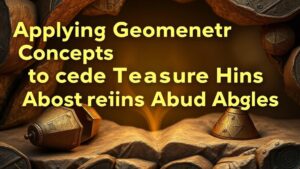Metal Detecting in Urban Greenways and Nature Preserves for Lost Relics
Metal Detecting in Urban Greenways and Nature Preserves for Lost Relics
Metal detecting is a popular hobby that combines the thrill of exploration with the potential for discovery. When applied to urban greenways and nature preserves, this endeavor can uncover lost relics, revealing stories about the past and contributing to archaeological knowledge. This article explores the practice of metal detecting in these unique landscapes, including its benefits, challenges, techniques, and legal considerations.
The Role of Urban Greenways and Nature Preserves
Urban greenways and nature preserves serve multiple purposes, from providing recreational spaces to supporting biodiversity. e areas are often remnants of historical significance, where urban development has either concealed or preserved artifacts. Greenways, which are typically linear park-like spaces connecting various parts of urban areas, often have histories laden with human activity, making them prime locations for metal detecting.
Nature preserves, on the other hand, protect ecosystems and wildlife. While they may seem less likely to hold human artifacts, many contain historical trails, old homesites, and abandoned settlements. Detecting in these areas reveals how human interaction with the environment has evolved over time.
The Benefits of Metal Detecting in Greenways and Preserves
- Historical Insights: Discovering lost relics can provide valuable insights into local history and the lives of past inhabitants.
- Community Engagement: Metal detecting can foster community relationships through shared interest and discoveries, often leading to community-enhanced historical events.
- Education: Detecting can be an educational tool, teaching both the detectorists and the public about archaeology and history.
Common Techniques for Successful Metal Detecting
Successful metal detecting in these unique environments involves a combination of the right equipment, techniques, and an understanding of historical context. Here are some common methods:
- Understanding the Equipment: High-quality metal detectors designed for various terrains are critical. For example, a detector with ground balance features is ideal for urban greenways where soil types can vary significantly.
- Researching Historical Maps: Prior to detecting, researchers should examine maps and historical records to identify potential activity hotspots, such as old roads, crossing points, or settlement areas.
- Ground Scanning: Utilizing ground scanning technology can help detect underlying anomalies before excavation.
Case Studies: Successful Finds and Their Implications
Several documented cases have highlighted the successes and implications of metal detecting in urban greenways and nature preserves. For example, a group of hobbyists in a regional park in Tennessee discovered Civil War artifacts, including buttons and musket balls. This find prompted local historians to organize educational programs, enhancing public understanding of the park’s role during the war.
Another notable case involved the discovery of Native American artifacts in a Montana nature preserve, leading to further archaeological digs. This finding not only provided insight into the indigenous cultures that predated urban development but also encouraged collaboration between local tribes and preservationists.
Legal Considerations and Ethical Practices
Before engaging in metal detecting, it is crucial to understand the legal implications. Many urban greenways and nature preserves have specific regulations regarding metal detecting, often prohibiting it altogether due to the risk of disturbing protected lands and ecosystems. Hobbyists should always:
- Check local laws and regulations regarding metal detecting in designated areas.
- Obtain necessary permits if required.
- Follow ethical practices, including reporting significant finds to local authorities or historical societies.
Practicing responsible detecting not only preserves the integrity of historical sites but also fosters goodwill among detectorists, land managers, and the general public.
Conclusion: Making the Most of Urban Greenways and Nature Preserves
Metal detecting in urban greenways and nature preserves can unveil fascinating pieces of local history and enrich our understanding of human interaction with the environment. By utilizing effective techniques, adhering to legal and ethical standards, and engaging with the community, detectorists can make meaningful contributions to archaeological knowledge and historical preservation.
As you embark on this journey, remember that each find not only tells a story but also represents a connection to the shared human experience. thrill of discovery awaits, waiting for the thoughtful and responsible metal detectorist to unlock time’s forgotten treasures.
